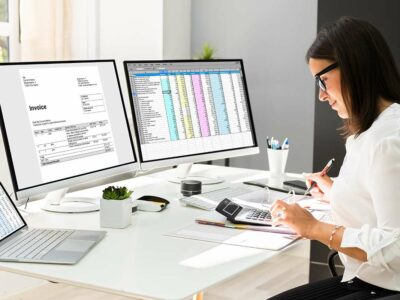
It’s an ordered list of sections, or accounts, for all of the transactions that go through your winery. Protecting against raw materials fraud can be challenging, but being aware of the possible types of frauds possible is a good start. The best internal control is to only do business with reliable and known suppliers and to have a contractual arrangement that allows for retribution if lower quality https://www.bookstime.com/ or mislabeled goods are provided. Employees and nonemployees alike should be trained about the benefits of sharing information about any irregularities of which they are aware. There will always be a cost of doing business, and finding where you can reduce costs takes time, thoroughness, and consistency. Hence, keeping a firm track of all the changes requires specialized accounting skills.

Stay up-to-date on winery accounting.
The chart below lists expenditures that are commonly considered winemaking costs and some that aren’t. In some cases, certain expenditures may or may not be classified as winemaking costs; it really depends on the situation. Another costing challenge with overhead is categorizing expenses that are commonly shared between departments. Here are some examples of common overhead expenses of this kind and how they’re typically broken down. This method assumes the most recently purchased or produced inventory items are the first items to be sold. This is unrealistic for most wineries because wine is typically vintage-dated, with older vintages sold before newer ones.
Wine Tasting 101─ How to Identify Wines That Match Your Preferences
Wine sales may be direct-to-consumer through tasting rooms or wine clubs, or to a third-party distributor. In any case, the winery needs to track when, what kind of, and to whom wine was sold, and to pay excise taxes to the appropriate taxing authority. States have different rules related to wine distribution and sales; most states require some variation of a three-tier distribution system made up of a winery, distributor, and retailer. The second step in wine accounting is understanding the cost of goods sold (COGS). COGS includes the cost of the grapes, the cost of production, and the cost of packaging and shipping. All these costs must be considered when calculating your final price per bottle.
Wine Production Has a Long Expenditure Capitalization Process
We then calculate the cost of wine sold outside of QuickBooks and then post Wine COGS as a journal entry each month. Care should be exercised when wineries contract with bonded warehouses. Verification of the warehouse’s bond should be supplemented by an inspection of physical controls, such as fire suppression systems and burglary alarms. Although preventive controls are essential, detective controls can also be helpful for wineries storing wine in bonded warehouses.
- The wine industries have to deal with heavy taxation and excise duties.
- Our packages typically range from $1500/month to $3000/month, depending on the size and complexity of your winery and the level of work we are doing.
- Another costing challenge with overhead is categorizing expenses that are commonly shared between departments.
- These bottles, of course, must be properly accounted for with respect to TTB and excise tax purposes.
- Every enterprise requires a stronghold in accounting to flourish and make great profits.
- This method is often used in more basic costing models and for smaller wineries; however, it can still be used in more complex costing models of larger wineries.
Accounting Basics Every Business Needs to Remember
Here’s an example of how facility costs might be allocated to different departments based on the square footage they use. SPID and FIFO costing are the most common methods used in a winemaking environment, especially because wine is typically vintage-based and tracked down to the individual wine stock-keeping unit (SKU). This method values inventory based on the average cost of all similar items available during the period. When costs aren’t easy to trace, it may be preferred to use an average, weighted average, or other ratio for applying costs. This method is also appropriate for consumable supplies, such as yeast and sulfur, or general costs, such as storage, utilities, and labor. This article is part one of a three-part series on the cost of goods sold—a key metric that can help wineries understand their profit margins.

Keep in mind you also want the domain name for the name you choose to be available so you can create a website and other online marketing tools, like an Instagram account. The firm is actively accepting new clients who wish to streamline their financial operations and achieve higher profitability. We will meet with you several wine accounting times throughout this process to make sure we all stay on the same page. We will gather information and docs, do a deep dive on the health of your books, and take care of any clean up necessary. If it looks like a good fit, we will send over a proposal for you to sign and get your winery scheduled for onboarding.



















